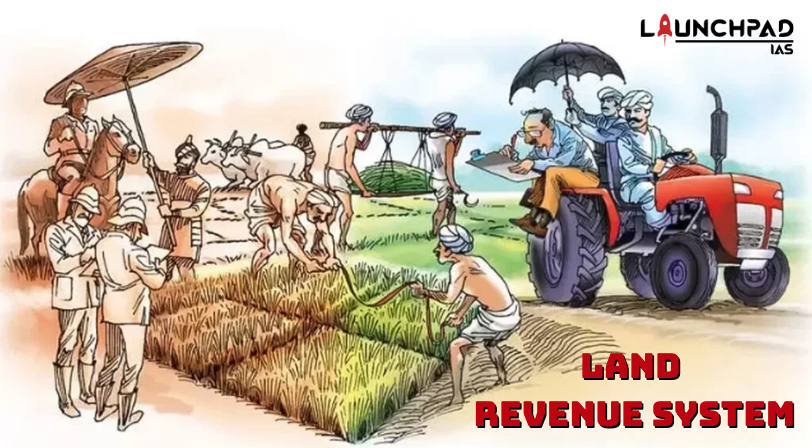- Land Revenue was one of the major sources of income for Britishers in India. There were broadly three types of Land Revenue Systems in existence during the British rule in India.
- Before independence, there were three major types of land revenue systems prevailing in the country:
- The Zamindari System
- The Mahalwari System
- The Ryotwari System
- The basic difference in these systems was regarding the mode of payment of land revenue.
The Zamindari System
- The Zamindari system was introduced by Lord Cornwallis in 1793 through Permanent Settlement which fixed the land rights of the members in perpetuity without any provision for fixed rent or occupancy rights for actual cultivators.
- Under the Zamindari system, the land revenue was collected from the farmers by the intermediaries known as Zamindars.
- The share of the government in the total land revenue collected by the zamindars was kept at 10/11th, and the remainder went to zamindars.
- The system was most prevalent in West Bengal, Bihar, Odisha, UP, Andhra Pradesh and Madhya Pradesh.
The Ryotwari System
- In the British territories in southern India, there was a move away from the idea of Permanent Settlement.
- A system that came to be known as the Ryotwari System, was devised by Captain Alexander Read and Sir Thomas Munro at the end of the 18th century and introduced by the latter when he was governor of Madras Presidency (1819–26).
- Under the Ryotwari system, the land revenue was paid by the farmers directly to the state.
- In this system, the Individual cultivator called Ryot had full rights regarding the sale, transfer, and leasing of the land.
- The ryots could not be evicted from their land as long as they paid the rent.
- It was prevalent in most of southern India, first introduced in Tamil Nadu. It was later extended to Maharashtra, Berar, East Punjab, Coorg, and Assam.
- The advantage of this system was the elimination of middlemen, who often oppressed villagers.
The Mahalwari System
- By the early 19th century, the Company officials were convinced that the system of revenue had to be changed again.
- The revenues cannot be fixed permanently at such a time when the Company needs more money to meet its expenses of administration and trade.
- In 1822, Englishman Holt Mackenzie devised a new system known as the Mahalwari System in the North Western Provinces of the Bengal Presidency (most of this area is now in Uttar Pradesh).
- Under the Mahalwari system, the land revenue was collected from the farmers by the village headmen on behalf of the whole village (and not the zamindar).
- The entire village was converted into one bigger unit called ‘Mahal’ and was treated as one unit for the payment of land revenue.
- The revenue under the Mahalwari system was to be revised periodically and not fixed permanently.
- The system was popularised by Lord William Bentick in Agra and Awadh and was later extended to Madhya Pradesh and Punjab.


